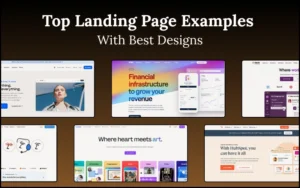How to become a good web designer? Generally speaking, web designers can be categorized in four different groups:
- Well paid, but don’t deliver value = These are the so-called swindlers, scammers, or fly-by-nighters that promise the world, but don’t deliver even the half of what they were paid to do.
- Underpaid, and don’t deliver value = In this category, you can find most web professionals who care more about technicalities more than they care about creativity and uniqueness. You will often come across them, offering services such as e-commerce integration, e-store design, responsive layouts, and so on.
- Underpaid, but deliver high value = Believe it or not, there are web professionals that do that. Their work is outstanding, but they don’t understand the business purpose of their designs and the value of what they’ve produced.
- Well paid, and deliver high value = This is the best possible group a designer can fall in, and it is where most well-known and respected professionals can be found. In fact, every designer out there is fighting to belong to this category one day.
Well paid and high-delivery designers seem almost like a myth to beginners looking to push their way in the crowd and succeed. Obviously, your first thought at the mention of this category is that it takes a real expert to join it, but there are many designers who had no idea what they were doing when they made it there.
Some of them were talented, others were lucky, but all of them worked hard to make it there from whatever of the first three categories.
Table of contents
- How To Become A Good Web Designer With Your Own Pricing Strategy
- Here are a couple of questions you need to answer before developing your strategy:
- Make sure you know how far you’ve gotten
- How To Become A Better Web Designer By Chasing Clients
- How To Become A Good Web Designer By Choosing Specialization
- The relationship between value and service
- How To Become A Good Web Designer With Follow up
- Your presence after sales
- How To Become A Good Web Designer With Simplicity

Are you interested in knowing how to become a good web designer? Better yet, are you willing to learn how to become a valuable web designer?
Dive into our treasure trove of blogs to uncover fresh web design ideas.

How To Become A Good Web Designer With Your Own Pricing Strategy
It is normal to rely on how much others are charging when launching your freelance business, but experience will teach you how to deal with this important point. Rethink the value of your efforts before making a decision, and base it on what you really think you’re worth being paid for.
What a good pricing strategy represents is, in fact, a carefully planned list of charges for the different products/services you’re offering. Lucky guesswork won’t help that much, and you shouldn’t make the mistake of basing your decision on how much you want to earn per month. Remember: users will never pay an illogical price for something that is not really outstanding.
Check out this blog to learn about best practices for website design.

Here are a couple of questions you need to answer before developing your strategy:
- Will you charge for your services on an hourly rate?
- Will you charge for your work on project-basis?
- Will your overall performance matter more than the final result?
- Have you thought of incremental price increases between different levels of products/services?
Make sure you know how far you’ve gotten
There is no room for ego in the design world, at least not before you’ve made sure you rate better than your competitors. Going through their work is a very good idea because it will help you capture your genuine position on the market and let you know whether you’re allowed to charge more than the average market rate.
Also read: Basic WordPress Tricks Every Designer Should Know

Ask yourself:
- Are you more experienced than your competitors?
- Is there some valuable technical skill you can offer and they can’t?
- What about your reputation? How does it stand?
Note that skill awareness has a huge influence on your pricing strategy, being the only reasonable mean you can use to round up fees and justify it to the clients.
How To Become A Better Web Designer By Chasing Clients

Rather than hanging over your competitors heads’, and trying to bring them down at every occasion, shift your efforts in the opposite direction: track people that have the financial power to pay for your work, and make them do so. Sometimes, it will mean you have to lift your rates, other times to bring them down, but the more selective you are the more this business game will work for you.
At a certain point, you will feel ready to negotiate prices and sell quality as it should be sold. Be brave about what you can offer, and don’t let the fear of losing a client stop you from turning him down if he is too nitpicky and demanding. Once you start working on low rates, you’ve earned yourself an unprofitable reputation that will stamp your name for many years to come. Therefore – choose!
Also read: The Classy Fonts Bundle Review: Professional Fonts for Designers

This is not something you’d be so confident about at the beginning, but that’s how the web-design world is: when you fight over scraps, scraps are what you get, so let great and well-paid projects be your ‘scraps’ instead.
How To Become A Good Web Designer By Choosing Specialization
If you’ve already decided to pursue well-paid deals, you can afford yourself the luxury of being an ‘all-in-one’ designer. This strategy may pay off financially, but it won’t support your career goals or bring you whatever type of expertise. The sooner you realize this, the better.
Another thing to remember is that every rate growth has to be justified with matching value, where specialization and experience outbid the ‘all in one’ strategy’ at least a couple of times.
When you specialize in something, you’re actually targeting your market and becoming a high-demand designer who knows what clients expect since he’s already targeting them. The bonus effect of doing this is just huge, because you’re embracing all skills needed to work in a particular niche, and you’re professionalizing in them.
The relationship between value and service
You can choose to focus on services, but it would mean you’re giving up on the idea of becoming professional in something because you’re constantly chasing what the client wants instead of what you want. You can give clients everything they ask for, but you will never do an outstanding job with it. And that’s where the chase for uniqueness begins.
Let’s make one point clear: you know how to design (otherwise you wouldn’t even be reading this article). Then, why would you struggle to prove this to the clients over and over again? Why not make the most of what you can offer, and embrace both challenges and problems to become stronger and more confident? Next time a client comes to you, don’t let him tell you what he wants. Tell him what he needs!
You may think people don’t like to listen, but there is no one I know of who wouldn’t accept a reasonable business solution. After all, clients are just people, and as people in general, they like someone to handle the thinking part of the job for them.
Also read: Follow These Tips To Become A better Web Designer

If you show some knowledge and expertise, they will trust you even more, and they will leave the success of their project entirely in your hands.
What you need to do in this case is quantify what the market needs, and learn how to respond to it. Keep in mind that sometimes this means being ultra-specific, so get ready to choose the exact industry you’re going to serve.
How To Become A Good Web Designer With Follow up
Sounds counterintuitive again, but do you know how many designers miss that? They’ve sold themselves on the market, designed a masterpiece, made money, and never followed up.

You’d ask: ‘Why would they?’
Your customer is your most important asset. Your quality depends entirely on his feedback, and your profit on him returning. And that’s the end of the story.
So, ask yourself: are your clients listed on your email? Are you updating them regularly about your sales and new services? If not, how are they supposed to hire you?
Also read: Best Passive Income Opportunities For Designers
Your presence after sales

Supporting clients after sales is rarely easy, and a lot of useful time that can be invested in new projects is drained. Therefore, this is an almost impossible target for freelance designers, so in case you’re one of them, support clients only when such thing have been agreed beforehand.
You can offer two hours of email support to check whether the design is responsive, or a longer one at a higher price. Difficult or not, after sales support is the key to many designers’ good reputation and trustworthiness, so give it a try.

It can also be your profit parachute for times when there is nothing else to do or a source of extra money when things are not going well. Clients will certainly appreciate it, and you’ll earn their willingness to return.
How To Become A Good Web Designer With Simplicity
Promoting your work doesn’t have to mean overwhelming prospects with aggressive marketing, so pick only Marketing 101 techniques and apply them only when work isn’t going that well.

Quality providers don’t impose themselves because they don’t need it, or sometimes just because they think proactive marketing is a waste of money, justifiable only for those who have nothing personal to offer to stand out of the crowd.
In short, that’s how you should handle your good reputation, and contribute to the design community, rather than compromising competitors to get more clients.
Like this post? Check out more amazing web design content here.




